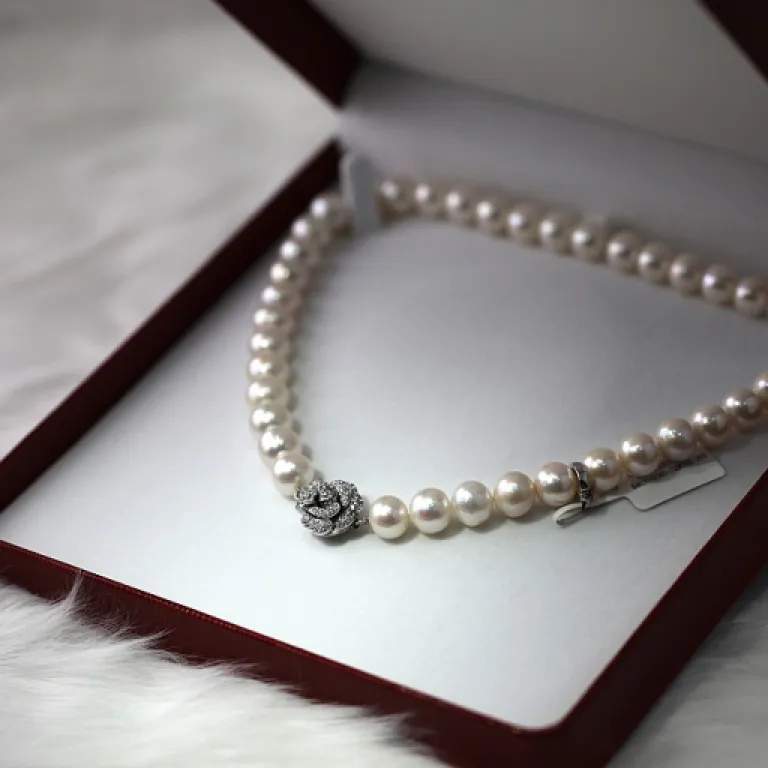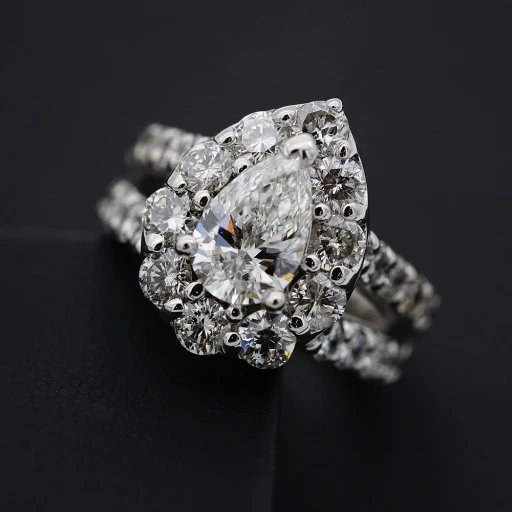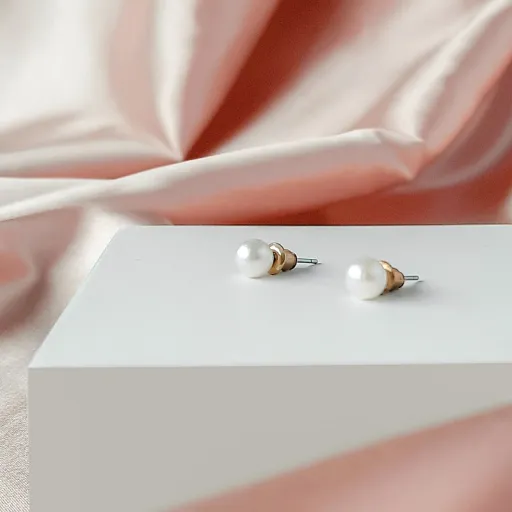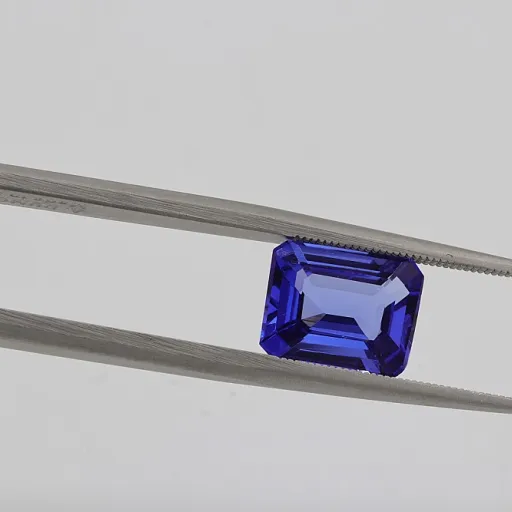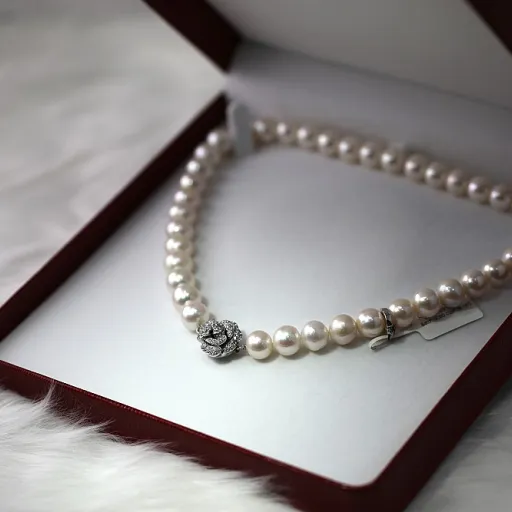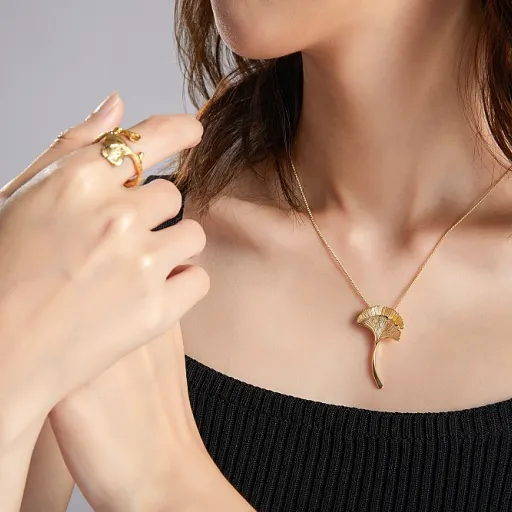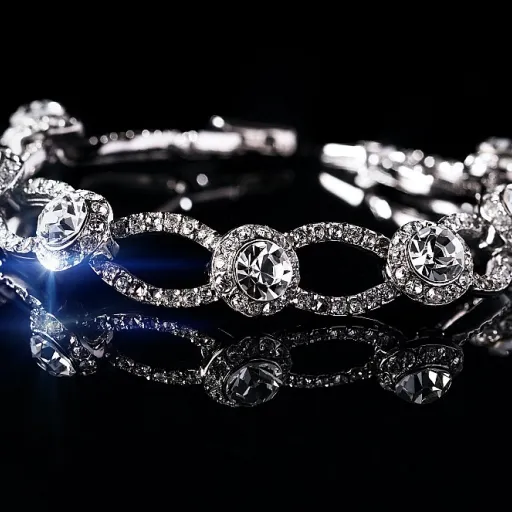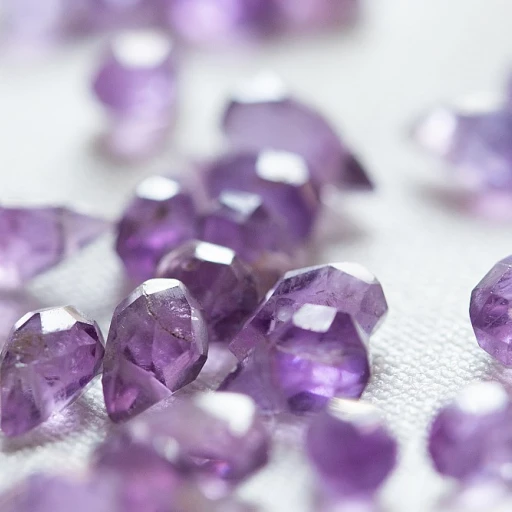
Origins and formation of white spinel
How White Spinel Forms in Nature and the Lab
White spinel is a fascinating gemstone, admired for its clarity and brilliance. Its origins can be traced to both natural and lab environments. In nature, spinel forms under high temperature and pressure conditions, often found in metamorphic rocks alongside other gemstones like sapphire, ruby, and quartz. Natural white spinel is rare, making it a prized find for collectors and fine jewelry owners.
Lab created white spinel is produced using advanced techniques such as the flame fusion (Verneuil method), Czochralski, and flux grown processes. These methods replicate the natural conditions that form spinel, resulting in gemstones with similar physical and optical properties. Lab grown spinel offers a more accessible price point, while maintaining the desirable qualities of natural stones.
Comparing White Spinel with Other Gemstones
White spinel is often compared to other colorless or near-colorless gemstones, such as sapphire, cubic zirconia, and even opal. Unlike cubic zirconia, which is synthetic, spinel can be found in both natural and lab grown forms. Its hardness and durability make it suitable for everyday wear, similar to sapphire and quartz. White spinel also stands out for its lack of inclusions and high refractive index, giving it a brilliant sparkle.
- Natural white spinel: Rare, higher price, valued for authenticity
- Lab grown white spinel: Accessible, consistent quality, sustainable
- Other spinel colors: Blue spinel, pink spinel, black spinel, and color change varieties
- Comparison stones: Sapphire blue, yellow sapphire, green sapphire, pink sapphire, Ethiopian opal, and faceted beads
Understanding the origins and formation of white spinel helps jewelry owners appreciate its unique place among gemstones. For those interested in exploring more about gemstone allure, discover the timeless appeal of aquamarine and diamond earrings.
Key characteristics that define white spinel
What Sets White Spinel Apart in Fine Jewelry
White spinel stands out among gemstones for its pure, luminous appearance and versatility. Unlike sapphire, ruby, or opal, white spinel is prized for its lack of color, offering a neutral brilliance that complements both classic and contemporary designs. Its clarity and brightness often draw comparisons to white sapphire, quartz, and even diamond, but with a distinct character all its own.
Physical and Optical Qualities
- Hardness: White spinel rates 8 on the Mohs scale, making it durable enough for everyday wear, similar to blue sapphire or pink sapphire.
- Brilliance: Its high refractive index gives it a lively sparkle, especially in round cut or faceted beads.
- Transparency: Most natural and lab created white spinel is transparent, with minimal inclusions, unlike some varieties of Ethiopian opal or quartz.
- Color: While the stone is technically colorless, subtle undertones can sometimes be observed, setting it apart from synthetic cubic zirconia or yag.
Natural vs. Lab Grown White Spinel
White spinel can be found in nature, but most stones on the market are lab grown using methods like flame fusion, Czochralski, or flux grown techniques. These processes produce high-quality crystals with fewer inclusions and consistent color. Synthetic options offer an accessible price point compared to natural stones, making them attractive for both designers and collectors.
Comparisons with Other Gemstones
| Gemstone | Color Range | Common Growth Methods | Typical Use |
|---|---|---|---|
| White Spinel | Colorless to faint undertones | Natural, Flame Fusion, Czochralski, Flux Grown | Fine jewelry, faceted beads, round cut |
| White Sapphire | Colorless | Natural, Hydrothermal, Verneuil Method | Engagement rings, earrings |
| Quartz | Colorless, pink, green, yellow | Natural, Hydrothermal | Jewelry, decorative objects |
| Opal | White, black, blue, Ethiopian | Natural, Lab Created | Pendants, statement pieces |
| Spinel (Blue, Pink, Black) | Blue, pink, black, color change | Natural, Lab Created | Rings, necklaces |
For collectors and designers, understanding these characteristics helps in selecting the right gemstone for each piece. If you are interested in exploring rare and unique gemstones, you might enjoy reading about the allure of a grandidierite ring, another fascinating option in the world of fine jewelry.
Evaluating quality and authenticity in white spinel
How to Distinguish Genuine White Spinel from Imitations
White spinel is admired for its brilliance and clarity, but its popularity means that imitations and synthetics are common in the market. Understanding how to evaluate quality and authenticity is essential for fine jewelry owners and collectors.
- Natural vs. Lab Created: Natural white spinel forms under unique geological conditions, while lab created spinel is produced using methods like the flame fusion or Czochralski process. Both can be beautiful, but natural stones are rarer and generally command a higher price.
- Common Imitations: White spinel is often confused with other gemstones such as white sapphire, quartz, cubic zirconia, and even synthetic opal. Some imitations, like hydrothermal or flux grown stones, can closely mimic the appearance of natural spinel.
- Testing Methods: Professional gemological testing is the most reliable way to confirm authenticity. Reputable jewelers use advanced tools to distinguish between natural, lab grown, and imitation stones. For example, the Verneuil method is often used to produce synthetic spinel, which can be identified by characteristic inclusions or growth patterns under magnification.
- Color and Clarity: While white spinel is valued for its colorless appearance, subtle undertones of blue, pink, yellow, or green can sometimes be present. High-quality stones are transparent and free from visible inclusions, similar to fine blue sapphire or pink sapphire.
- Cut and Shape: Round cut and faceted beads are popular choices for maximizing brilliance. A well-cut white spinel will reflect light evenly, enhancing its allure alongside other gemstones like ruby, blue spinel, or black spinel.
When evaluating a piece, always request a certificate of authenticity and inquire about the stone’s origin and production method. This is especially important when comparing white spinel to other colorless or colored gemstones such as sapphire blue, yellow sapphire, or spinel blue. For those interested in the broader world of colored gemstones, exploring the allure and complexity of blue gemstone jewelry can offer further insights into quality assessment and market trends.
| Gemstone | Natural | Lab Created | Common Imitations |
|---|---|---|---|
| White Spinel | Yes | Yes (flame fusion, Czochralski) | Quartz, cubic zirconia, synthetic opal |
| Sapphire (white, blue, pink, yellow, green) | Yes | Yes (hydrothermal, flux grown) | Spinel, yag, cubic zirconia |
| Opal (Ethiopian opal) | Yes | Yes | Glass, plastic |
Choosing authentic white spinel for your collection not only preserves value but also ensures lasting beauty in your fine jewelry pieces. Always work with trusted professionals and stay informed about the latest advancements in gemstone identification.
Design trends featuring white spinel
Modern Settings and Creative Pairings
White spinel has become a favorite among designers for its versatility and brilliance. Its neutral color allows it to blend seamlessly with both classic and contemporary settings. Jewelers often set white spinel in platinum or white gold to enhance its icy appearance, but it also pairs beautifully with yellow or rose gold for a warmer look. Designers are increasingly combining white spinel with colored gemstones such as blue sapphire, pink sapphire, green sapphire, and even Ethiopian opal. These combinations create striking contrasts and highlight the clarity of the spinel. Faceted beads and round cut white spinel are popular choices for both minimalist and statement pieces.Lab-Grown and Synthetic Innovations
The rise of lab created gemstones has expanded the creative possibilities for white spinel jewelry. Techniques like the flame fusion (Verneuil method), flux grown, and hydrothermal processes allow for the production of high-quality synthetic spinel that rivals natural stones in appearance. These lab grown options are often more affordable, making intricate designs accessible without compromising on beauty or durability. Designers sometimes use white spinel as an alternative to more expensive stones like sapphire, ruby, or even diamond. Its optical properties and price point make it a practical choice for both everyday wear and special occasion pieces. Lab grown spinel also appeals to those seeking ethical and sustainable options.Trend Highlights and Unique Applications
Recent trends showcase white spinel alongside gemstones like blue spinel, black spinel, and color change varieties. Some collections feature spinel blue or sapphire blue accents, while others incorporate green, yellow, or pink hues for a playful touch. White spinel is also used in combination with cubic zirconia, quartz, and even opal for layered, textured designs. Designers are experimenting with settings that highlight the stone’s brilliance, such as halo arrangements or pavé bands. The round cut remains a classic, but oval and cushion cuts are gaining popularity for their vintage appeal. For those interested in unique materials, white spinel is sometimes paired with synthetic stones like yag or with faceted beads for a modern twist.- White spinel’s adaptability suits both traditional and avant-garde jewelry.
- Lab grown and synthetic options broaden design and price possibilities.
- Pairings with colored gemstones and creative cuts are on the rise.
Caring for and maintaining white spinel jewelry
Best Practices for Preserving White Spinel's Brilliance
White spinel, whether natural or lab created, is prized for its clarity and luster, often rivaling more expensive gemstones like sapphire or even diamond. To keep your white spinel jewelry looking its best, a few simple habits can make a big difference.
- Gentle Cleaning: Clean your spinel pieces regularly with warm soapy water and a soft brush. Avoid harsh chemicals, especially if your jewelry features other gemstones like opal, quartz, or cubic zirconia, which may be more sensitive.
- Safe Storage: Store white spinel separately from harder stones such as sapphire or ruby to prevent scratches. Soft pouches or lined jewelry boxes are ideal, especially for faceted beads or round cut designs.
- Avoid Extreme Conditions: While spinel is durable, sudden temperature changes or prolonged exposure to direct sunlight can impact both natural and synthetic stones. This is particularly important for pieces featuring color change or blue spinel, as their hues may shift over time.
- Professional Maintenance: For jewelry set with multiple gemstones—such as blue sapphire, yellow sapphire, or green sapphire—have settings checked periodically by a professional. This ensures stones remain secure, especially in intricate designs or when using lab grown or hydrothermal spinel.
Special Considerations for Lab Grown and Synthetic Spinel
Lab created white spinel, produced by methods like flame fusion, Czochralski, or the Verneuil method, shares many care requirements with natural stones. However, some synthetic varieties, such as flux grown or those combined with materials like YAG, may have unique sensitivities. Always check with your jeweler for specific recommendations if your piece includes lab grown or synthetic gemstones.
Protecting Value and Appearance
Maintaining your white spinel jewelry not only preserves its beauty but also its market value. Regular care helps prevent damage that could affect the price or desirability of your piece, whether it features classic white spinel, rare black spinel, or vibrant spinel blue accents. For collectors and investors, proper maintenance is just as important as understanding the origins and characteristics of your gemstones.
Market value and investment potential of white spinel
Current Market Dynamics and Value Factors
White spinel has steadily gained recognition among fine jewelry collectors and designers, especially as interest in alternative gemstones grows. Its price is influenced by several factors, including whether the stone is natural or lab created, the method of synthesis (such as flame fusion, hydrothermal, or the Czochralski process), and the overall quality of the faceted beads or round cut stones.
- Natural vs. Synthetic: Natural white spinel is rare, making it more valuable than lab grown or synthetic counterparts. Lab created stones, produced through methods like the Verneuil method or flux grown techniques, are more affordable but can still offer exceptional clarity and brilliance.
- Color and Clarity: While white spinel is prized for its pure, colorless appearance, subtle undertones or inclusions can affect value. Stones with no visible inclusions and a bright, even color command higher prices.
- Cut and Size: Precision in cutting, such as a well-proportioned round cut, enhances the stone’s brilliance and market appeal. Larger stones, especially those with excellent clarity, are rarer and more valuable.
Comparing White Spinel to Other Gemstones
White spinel is often compared to other colorless or near-colorless gemstones like sapphire, quartz, cubic zirconia, and even opal. While sapphire and quartz are well-known, white spinel offers a unique combination of durability and affordability. Unlike cubic zirconia, which is entirely synthetic, white spinel can be found in both natural and lab grown forms. Its versatility extends to colored varieties as well, such as blue spinel, pink spinel, and even color change spinel, which are popular in contemporary jewelry designs alongside blue sapphire, yellow sapphire, green sapphire, and ruby.
Investment Potential and Trends
The investment potential of white spinel is closely tied to its rarity and growing popularity in fine jewelry. As more consumers seek out unique gemstones beyond traditional choices like sapphire blue or Ethiopian opal, demand for white spinel is expected to rise. Market trends show increased interest in lab created and synthetic options, especially for those who value ethical sourcing and affordability. However, natural white spinel remains the most sought after by collectors and investors.
- Black spinel and spinel blue are also gaining traction, offering a spectrum of colors for diverse jewelry collections.
- Designers are experimenting with combinations of white spinel and colored stones, such as pink sapphire, orange sapphire, and green gemstones, to create modern, eye catching pieces.
Price Considerations and Buying Tips
When evaluating the price of white spinel jewelry, consider the origin (natural or lab grown), the method of synthesis (flame fusion, hydrothermal, Czochralski, or Verneuil method), and the overall craftsmanship. Always request certification for authenticity and clarity, especially for higher value pieces. For those looking to add cart to their collection, white spinel offers a compelling balance of beauty, durability, and value compared to other gemstones.
